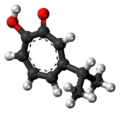Thujaplicin
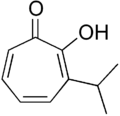
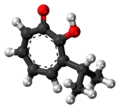
Chemical structure of α-thujaplicin
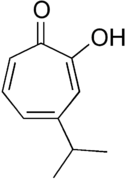
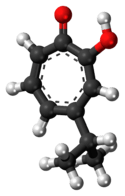
Chemical structure of γ-thujaplicin
Thujaplicins (isopropyl cycloheptatrienolones) are series of related chemical substances discovered in the 1930s and isolated from Thuja plicata (western redcedar tree).[1] The three compounds are α-thujaplicin, β-thujaplicin (hinokitiol), and γ-thujaplicin. They are known for potent anti-fungal and anti-bacterial properties.[2] They are also known to be potent antioxidants.[3]
References
- ↑ Erdtman, H.; Gripenberg, J. (1948). "Antibiotic substances from the heart wood of Thuja plicata Don.". Nature. 161 (4097): 719. doi:10.1038/161719a0.
- ↑ Chedgy, R. J.; Lim, Y. W.; Breuil, C. (2009). "Effects of leaching on fungal growth and decay of Western red cedar (Thuja plicata)". Canadian Journal of Microbiology. 55 (5): 578–586. doi:10.1139/W08-161. PMID 19483786.
- ↑ Chedgy, R. (2010). Secondary Metabolites of Western Red Cedar (Thuja plicata). Lambert Academic Publishing. ISBN 978-3-8383-4661-8.
This article is issued from Wikipedia - version of the 6/6/2016. The text is available under the Creative Commons Attribution/Share Alike but additional terms may apply for the media files.

